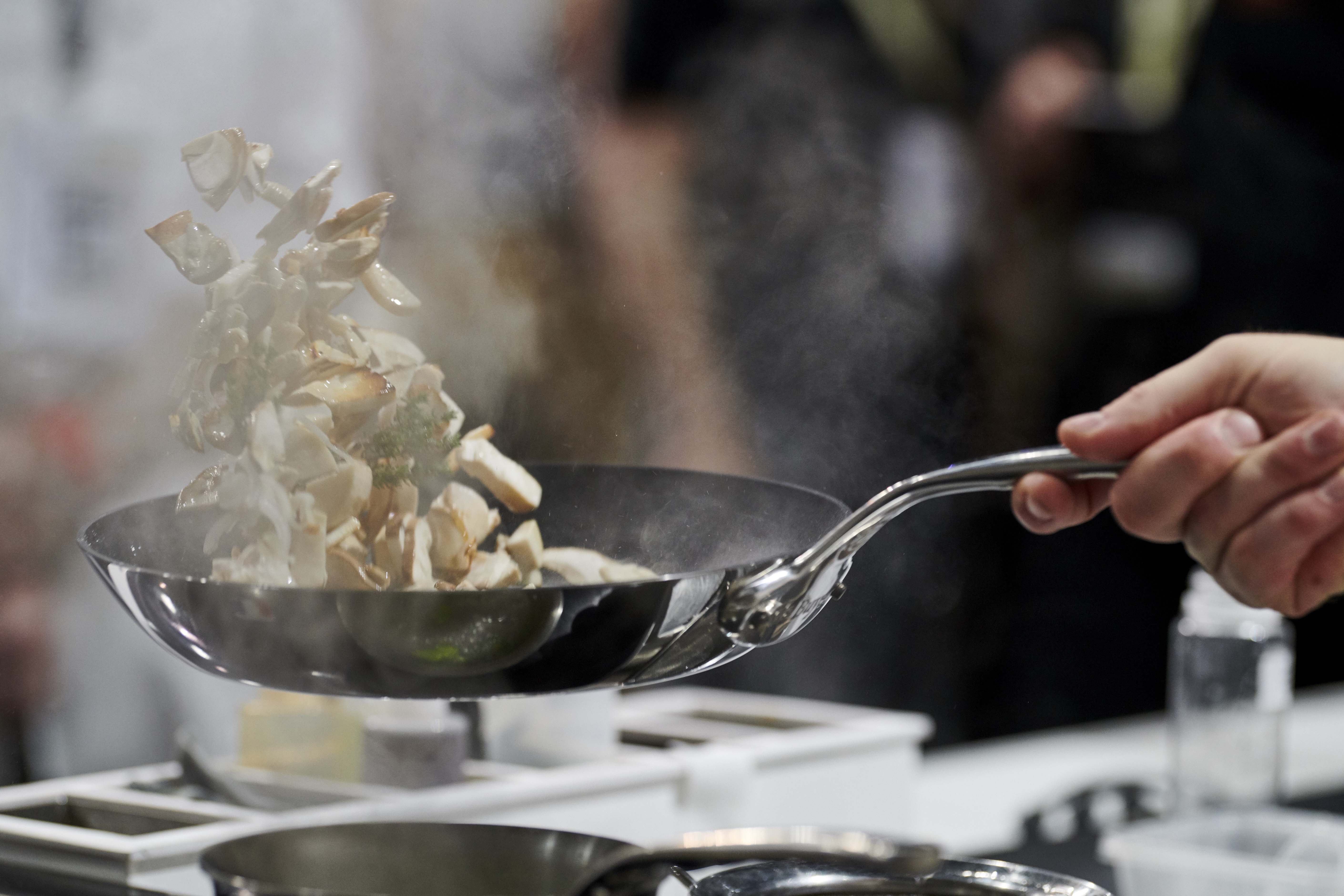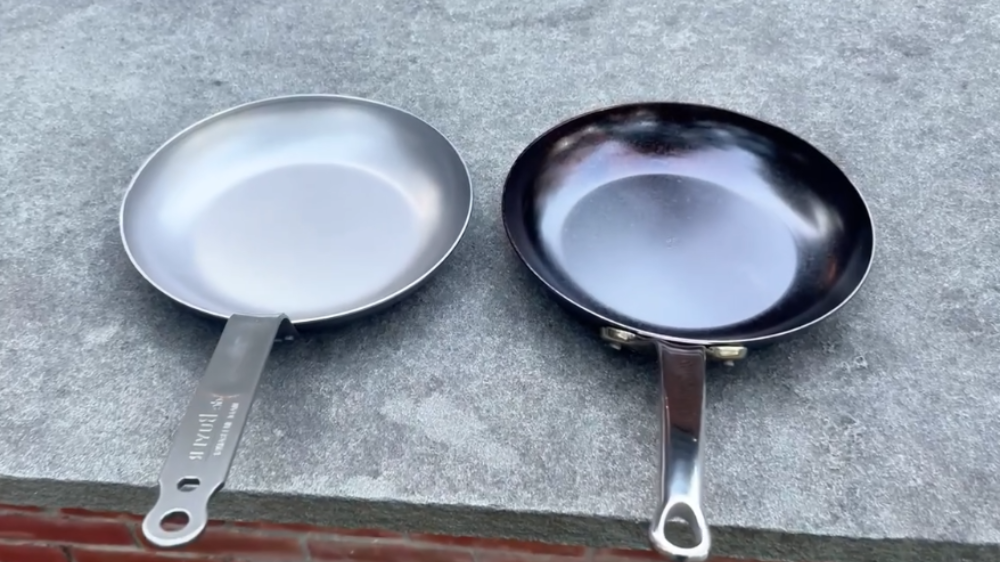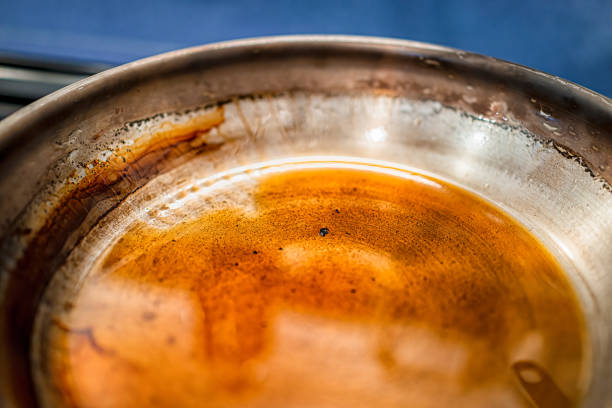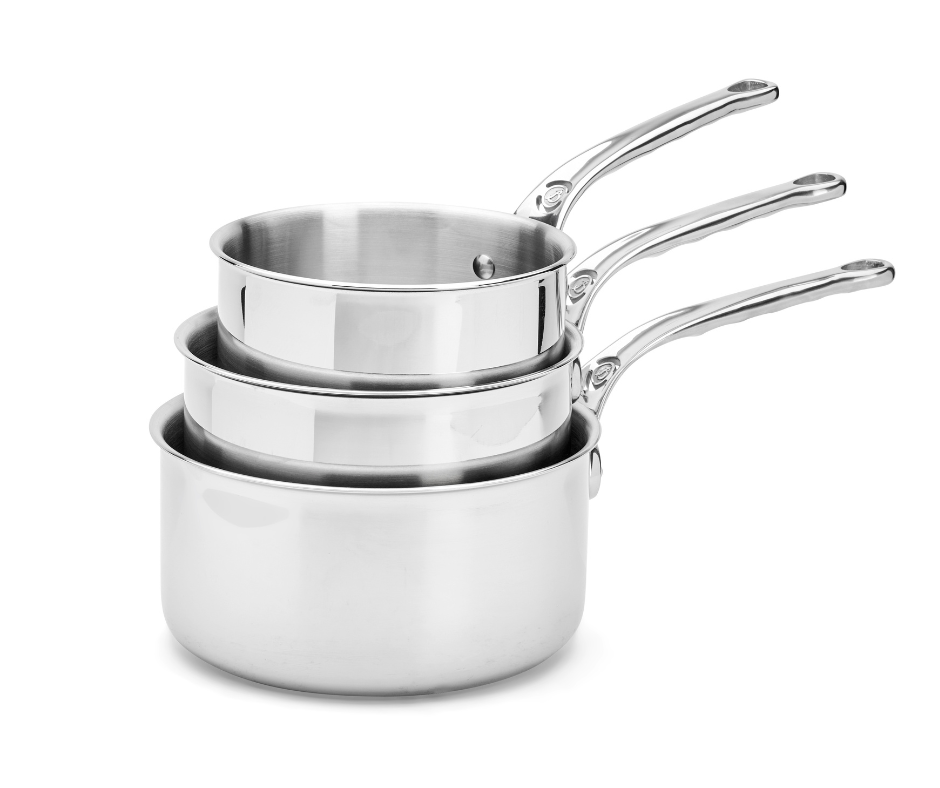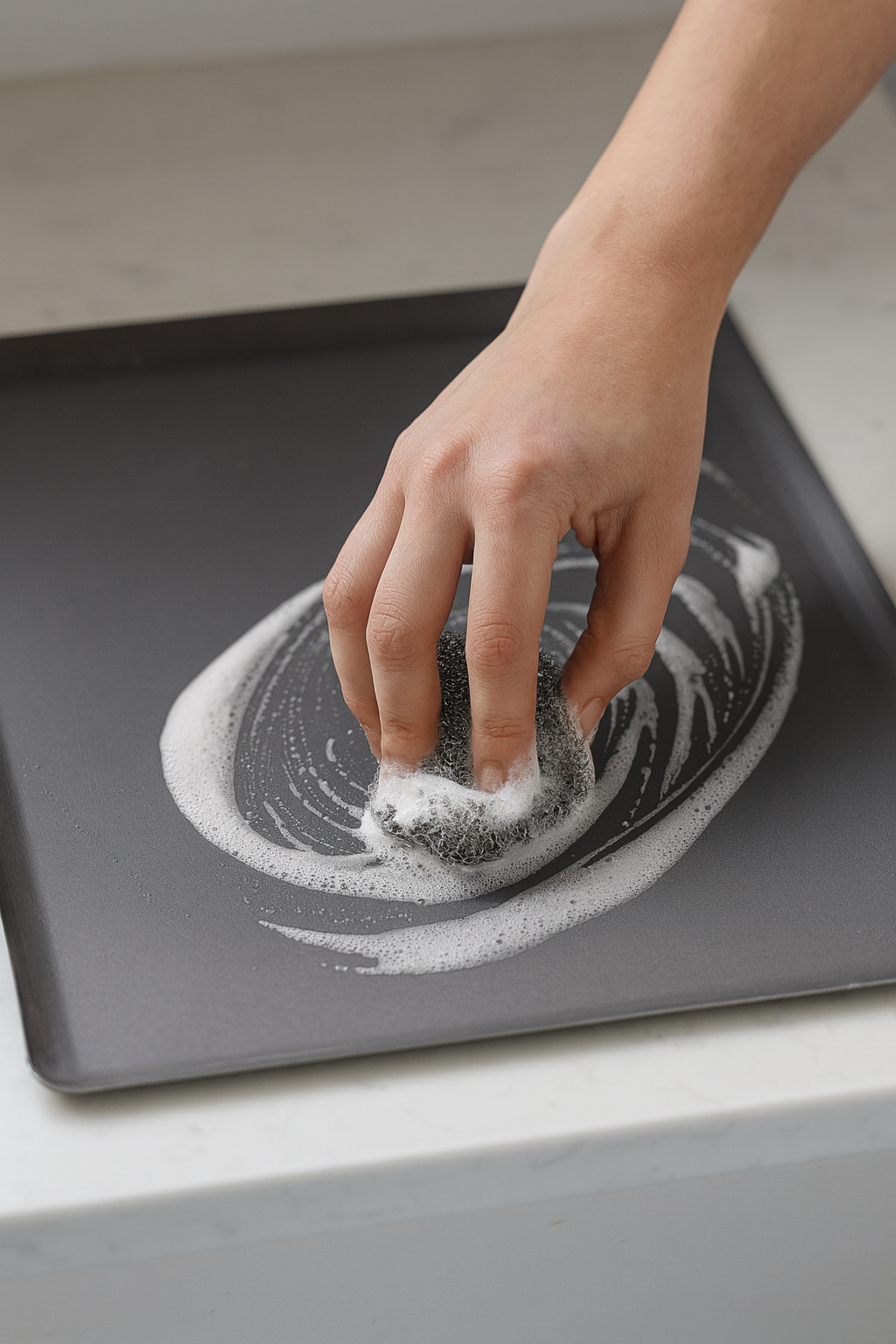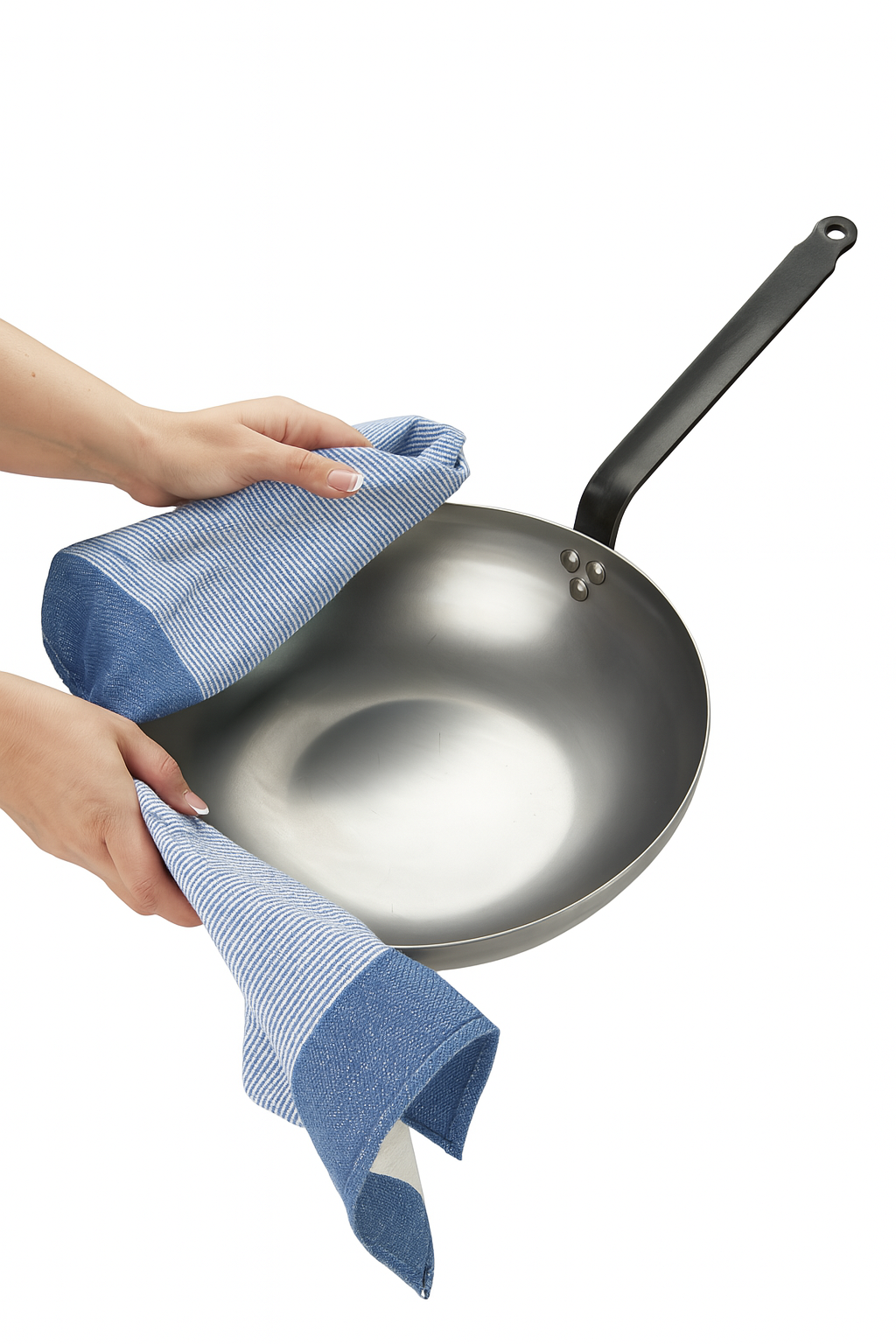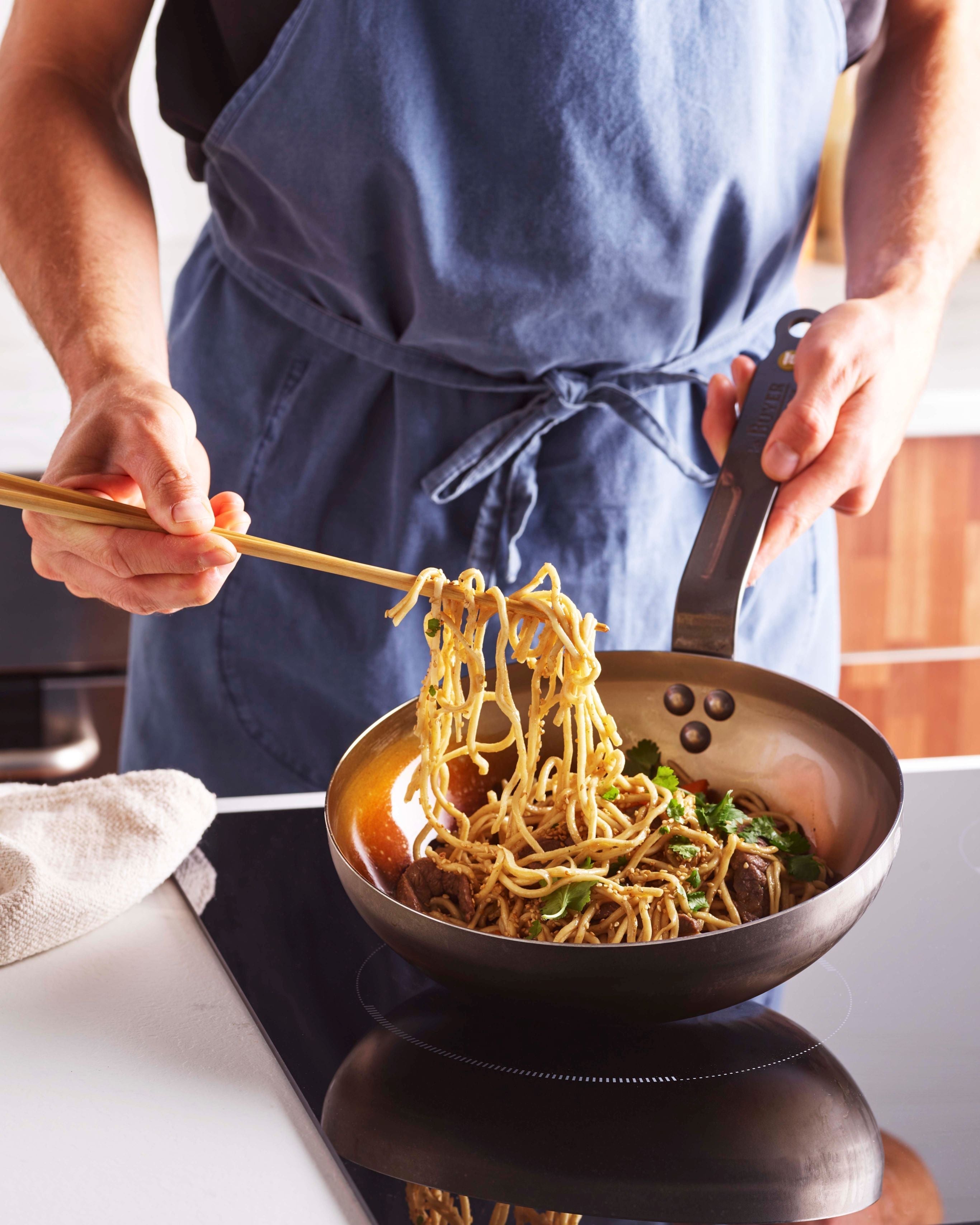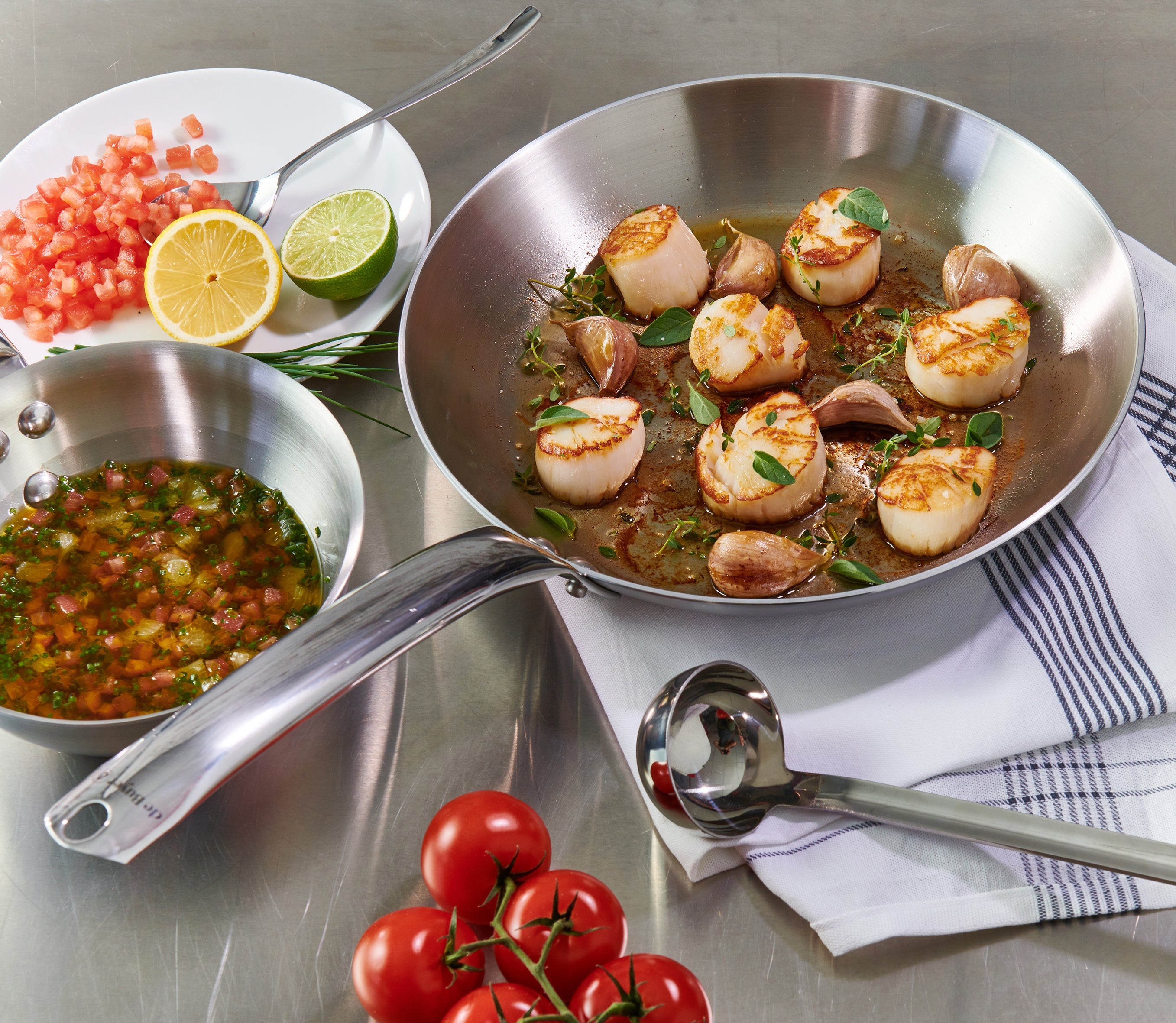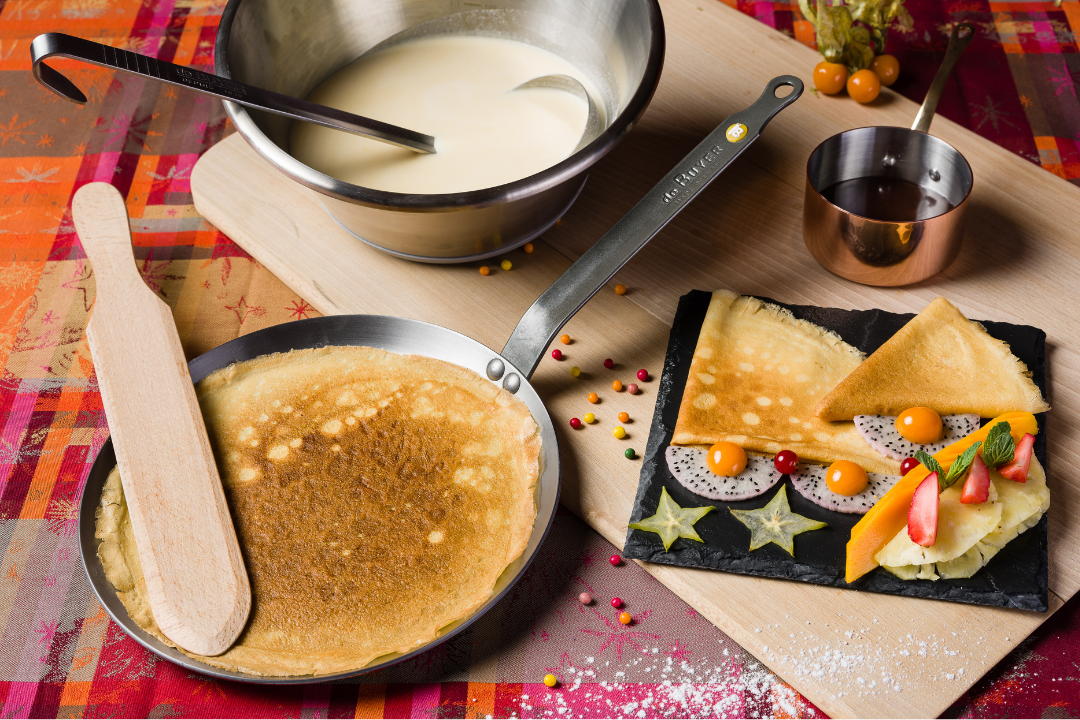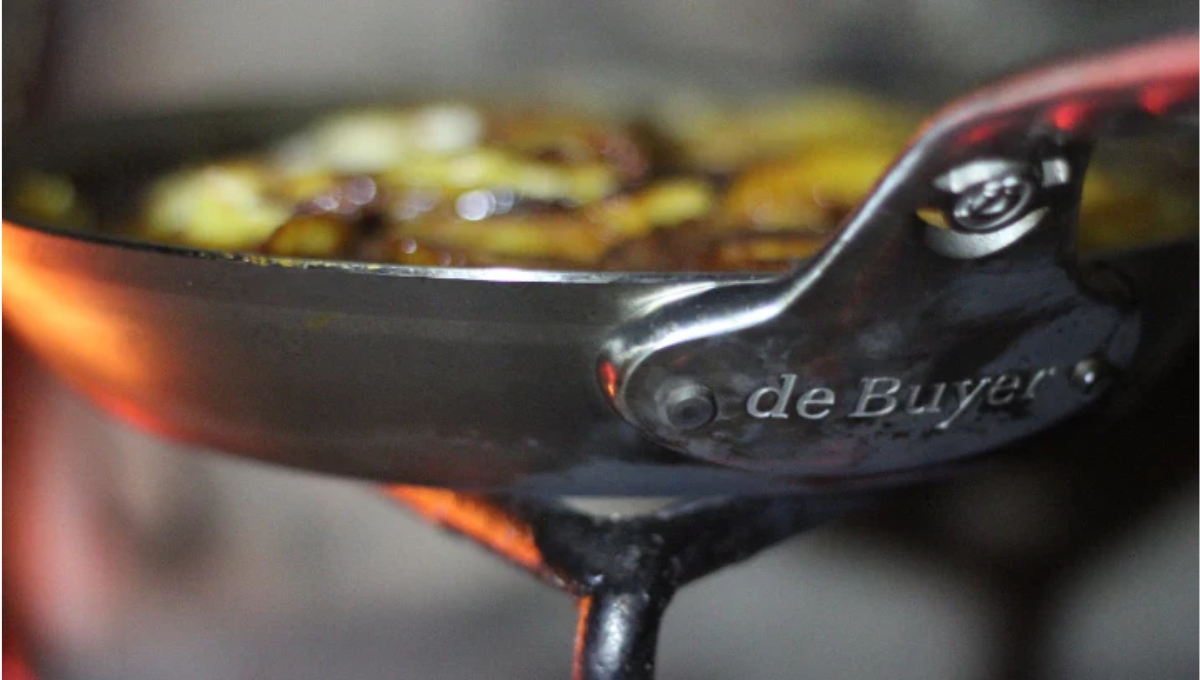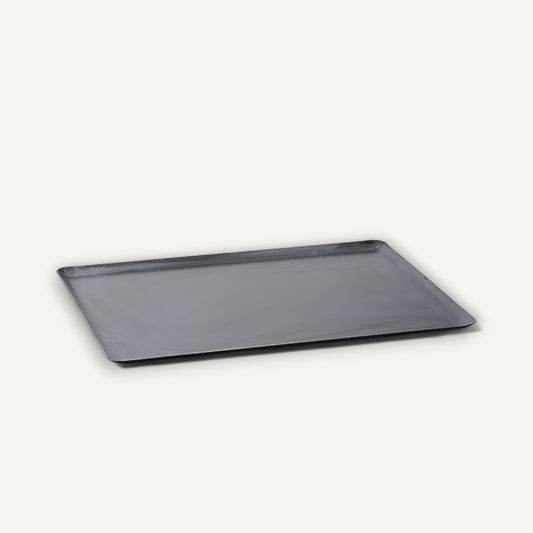Sautéing is a versatile and essential technique. It's a direct dry heat cooking method that uses fat and high heat. This article covers the best methods of sautéing, offers tips for enhancing flavor, and explains how to get the most out of your sautéing skills.
We’ll cover the basics of sautéing for home cooks and give expert tips for professional chefs honing their skills.
What is Sautéing?
The definition of sauté is to cook food in small amounts of fat over high heat, typically in a wide sauté pan. The technique utilizes the Maillard reaction, a chemical reaction that works in three stages, to create a deliciously browned exterior while preserving the food's natural texture and flavor.
-
Initial Reaction: A carbonyl group from a sugar reacts with an amino group from a protein or amino acid, forming water and an unstable glycosylamine.
-
Amadori Rearrangement: The glycosylamine undergoes a series of rearrangements to produce aminoketose compounds.
-
Final Stage: Aminoketose compounds undergo further reactions, including rearrangements, conversions, additions, and polymerizations, resulting in the formation of various molecules that contribute to flavor, aroma, and color.
This reaction is complicated, but the result is cooked browned food with a rich flavor profile. Sautéing accomplishes this reaction quickly and without introducing excess fat.
Ideal Foods to Sauté
Try your hand with foods that are perfect for sautéing, such as:
-
Vegetables: Sauté vegetables like mushrooms, bell peppers, zucchini, and spinach.
-
Proteins: Sauté chicken breasts, shrimp, and fish fillets in any cooking oil.
-
Fruits: Sauté apples, pears, or even citrus slices for a savory dish.
The Best Pans for Sautéing
Any frying pan won’t do. Avoid roasting pans and large pots. This cooking technique requires choosing the right pan.
Ideal Pans
We recommend using skillets or sauté pans with a wide, flat bottom and low sides to allow for quick evaporation and even heat distribution. Additionally, a maneuverable pan that isn’t too heavy will be easier to agitate.
Materials
You need a pan that can take high heat well and will cook evenly. Materials like stainless steel, carbon steel, copper, and select nonstick pans will perform well.
-
Stainless Steel: This material is durable and resistant to high heat and corrosion. Practice is required to prevent sticking with some cooking methods.
-
Carbon Steel: This material combines the best of stainless steel and cast iron. It's lightweight and responsive and conducts heat evenly. Requires seasoning to develop a nonstick surface.
-
Copper: This material has excellent heat conductivity and precise control. It comes with a higher price tag.
De Buyer’s carbon steel Mineral B Skillet is an excellent example of superior heat retention and non-stick properties once seasoned.
How to Sauté: Step-by-Step Guide
Here is our detailed, easy-to-follow step-by-step guide on how to sauté food. This process cooks food quickly and is a hands-on cooking method. Once your pan reaches medium heat, you need to stay planted at the cooktop with your attention firmly on sautéing.
-
Preheat the Pan: It’s important to preheat the pan over medium-high heat before adding oil. Test to see if your pan is hot enough by flicking water on it. If the water beads and dances across the pan, you’ve reached the right temperature.
-
Add Oil or Butter: Add a small amount of fat, such as oil or butter, and allow it to heat up until it shimmers (for oil) or foams (for butter).
-
Add the Food: Cook the food in small batches to avoid overcrowding the pan. Adding all your food at once can cause steaming instead of sautéing, and you'll get soggy vegetables instead of sautéed vegetables.
-
Stir and Toss: Stirring or tossing the food regularly ensures even cooking and browning. You can use a spatula or the shake-and-toss method.
-
Finish Cooking: The cooking process is complete once the food is cooked through, tender, and has a golden brown exterior.
Sautéing Tips for Enhanced Flavor
Here are some professional tips for improving the flavor of sautéed dishes. Our most important tip is to practice. The best teacher is experience.
Season Early
We recommend seasoning the food with salt and pepper at the beginning of cooking to enhance the flavors. Appropriate salting will draw out the water in foods and yield a juicier, more flavorful taste profile. Salt also changes the texture of foods and can help to relax the proteins in some dishes. Depending on your recipe, you may need to salt minutes or hours before sautéing.
Add Fresh Herbs
Fresh herbs like rosemary, mint, and basil will elevate your dish. Add these ingredients towards the end of cooking for an aromatic finish. Use this simple herb pairing guide to help you.
-
Basil: A strong, peppery, and slightly sweet herb that pairs well with chives and thyme and is a good addition to foods like eggplant, pizza, white beans, and zucchini.
-
Rosemary: A lemony, piney, and woody herb that pairs well with bay leaves and tastes delicious with root vegetables and beef.
-
Mint: A cool, aromatic, and sweet herb that pairs well with basil, dill, oregano, parsley, and thyme and is delicious with carrots.
-
Oregano: An aromatic and earthy herb that pairs well with basil and rosemary. It makes a wonderful accompaniment to artichokes, potatoes, and tomatoes.
Deglaze the Pan
Deglazing is a cooking method where liquid is added to a hot pan to release and lift the browned bits (known as fond) from the bottom of the pan. The flavorful fond is then incorporated back into the liquid and can be made into a sauce. You may deglaze the pan with wine, broth, or vinegar after sautéing to create a flavorful sauce or glaze.
Layer Flavors
Layering flavors with garlic, onions, or spices can elevate the dish. It’s best to pre-chop these add-ins before you begin the sautéing process.
Common Sautéing Mistakes to Avoid
Here are the common mistakes people make when sautéing and how to avoid them.
-
Overcrowding the Pan: As mentioned, overcrowding the pan can lower the pan’s heat and lead to steaming instead of sautéing. Use a large pan or sauté in batches.
-
Not Preheating the Pan: To get a quick sear, the pan must be hot before adding the oil. We recommend practicing sautéing vegetables when you first purchase a pan to test its heating times.
-
Using Too Much Fat: We advise using just enough oil or butter for cooking without drowning the food. There should be a thin, even layer of fat at the bottom of the pan. Try adding tablespoons one at a time to reach the desired fat amount.
-
Using the Wrong Kind of Fat: You need oils with a high enough smoke point to sauté without burning off. Fats like olive oil, avocado oil, and clarified butter will do fine.
-
Stirring Too Much: Constantly stirring can prevent the food from getting the proper browning. Flip and toss only as is necessary to brown evenly.
Perfect Your Sautéing Technique with de Buyer Cookware
The right technique and tools help you achieve a perfect sauté every time. de Buyer is committed to crafting high-quality and well-performing cookware for professional and home kitchens.
Browse de Buyer’s selection of high-quality skillets, pans, and cookware for your sautéing needs.
